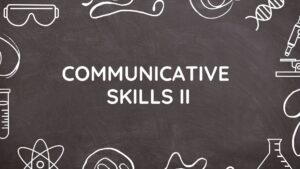SECTION B.
INSTRUCTION: ANSWER ANY TWO(2) QUESTIONS.
QUESTION 1.
Read the following passage carefully and write an outline of it.
Many students treat the learning process as a passive one. Their view of it goes like this. You wait till the teacher comes in and starts teaching. He may tell you what the topic is before he starts or he may expect you to guess it as he goes along. Anyway, you listen to him, and take notes if he writes them and tells you to copy them. When the lesson is over, you close your book and leave it closed till the next lesson. Practically, at the end of the term or year, you learn by heart those in comprehensive notes and pour them out during the examinations. Little or no learning, infact, takes place.
There are, however, a number of methods as student can employ to make his learning more effective. It is wise to get to know in advance what topics are planned for the week and eventually for the lesson. One can then do some reading on the topic before hand. Even if the topic seems somewhat confusing, the students will have an idea where his difficulties are. A quick skimming will give an idea of the of the general direction of the writers’ thoughts. Later, a more careful reading will give more details of information.
During the lesson, the student must listen carefully and be ready to ask questions if he does not understand. If the teacher is going too fast, he can be asked to slow down. It is a good practice to try to pick out the important points as the lesson proceeds. These points may be written in a rough note book. If the teacher does not give notes, then at least there is something written down as a reminder of what has been said. If the teacher gives notes to be copied, the students’ own notes maybe compared with these as a check. If the notes do not make sense, it is best to ask the teacher for clarification before the lesson ends.
As soon as possible after the lesson, the notes should be re-read at intervals, so that the student can build up an overall picture of what has been thought so far. This will help him in understanding better where all the the parts of the subject fit, and will make future lessons more comprehensible. In short, effective studying means repeated movement backwards and forwards over the area of study. [20 marks]
QUESTION 2
Read the following sentences carefully and correct any errors of subject and verb agreement.
I. Mr. Addo do not take cream in his coffee.
II. Araba’s feet has blisters from her new shoes.
III. The lenses for this camera is very expensive.
IV. Is this girl scouts in the parade this year.
V. The gorillas in the zoo was making faces at the visitors.
VI. Some friends of my brothers are coming for dining.
VII. Where is the new journals.
VIII. Each student appears to has a problem.
IX. One of these rivers wind through the forest.
X. Each student appear to has a problem.
XI. One of these rivers wind its way through the hills.
XII. All his hope of winning were lost.
XIII. Either Steve or his friend was coming home early weekend.
[20 marks]
QUESTION 3
Re-write the following sentences restoring the punctuation marks and capital letters.
I. The following famous players have left a good legacy for their nations Yarah Abel Addulai and Issa Busanya.
II. Doe went to the market and bought fish onion pepper and salt.
III. Why did you say I told you why I thought I was late.
IV. We read Achebe’s things fall Apartin our literature studies.
V. Why did you come late the tutor asked.
[2o marks]
QUESTION 4
A) Construct two (2) sentences to illustrate each of the following sentences. [10 marks]
I. SVO
II. ASV
III. SAVC
IV. SAV
V. ASVOO
B) Identify the subject and verb in each of the following sentences [10 marks]
I. You are ready early
II. Esi will mail mother a letter
III. The man should not phone again
IV. Some of us are happy with our courses
V. Last week Araba found a large sum of money


